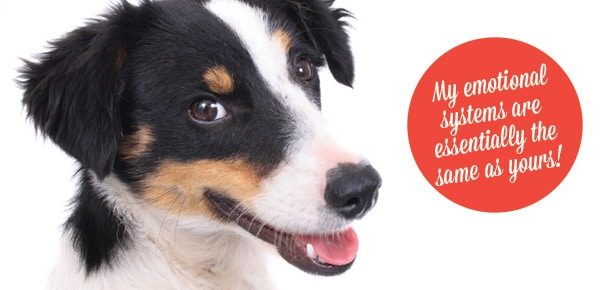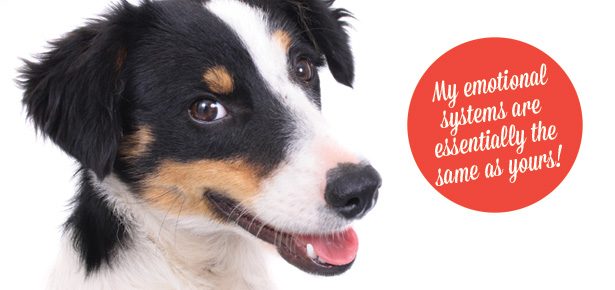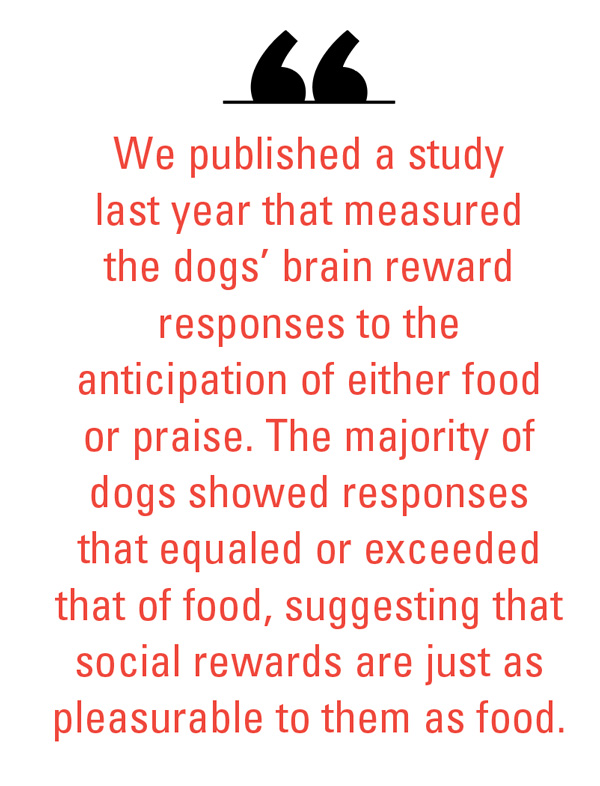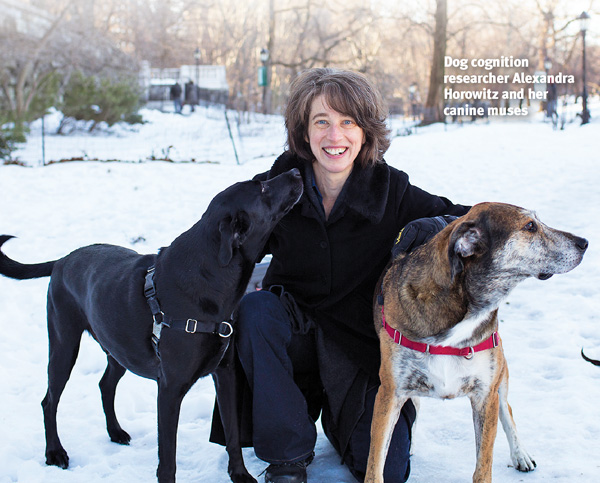

A Dog’s Mind: How Dogs Think & Experience Emotions
Fascinating new research into how dogs think and the emotions they experience is helping to improve our understanding of our dogs, but there’s still much left to learn
We pamper and spoil them, let them sleep in our beds, call them our “fur babies,” dress them up on Halloween, fill their stockings at Christmas, and generally treat them like human members of our families—often without stopping to consider what they think of it all. Now, scientific research is getting closer to determining what actually goes on in our dogs’ minds—with some surprising results.
A Neuroscientist Turns His Attention to the Canine Mind
My interview with Gregory Berns, a highly regarded neuroscientist who, in the past five or so years has turned his attention from the human brain to the canine mind, could not be taking place at a more fateful time.
At the start of my call with Greg, who is the director of the Center for Neuropolicy and Facility for Education and Research in Neuroscience at Emory University in Atlanta, Georgia, as well as the co-founder of Dog Star Technologies, a company that uses neuroscience to enhance the dog-human partnership, I explain that my family is facing a rather serious challenge with one of our dogs.
Ever since rescuing him—known bite history and all—from a shelter five years ago, Max has acted very aggressively toward strangers, other dogs, cats, cars, bicycles, skateboards, and pretty much anything that moves or that, we think, he perceives to pose some sort of threat. Lately, he has started to turn his (negative) attention toward our one-and-a-half-year-old daughter, who wasn’t even a thought in our mind when we first adopted him. After numerous attempts at training, dietary changes, and even medication, we feel as though we’re running out of options—though I can’t shake the feeling that, if I had even an inkling of what Max thinks or feels or needs from me, I would be in a better position to help him.
Greg has done and continues to do a lot of work to better understand canine thought and thought processes—his first dog-centered book, How Dogs Love Us, published in 2013, quickly became a Wall Street Journal and New York Times bestseller; his second book, What It’s Like to Be a Dog, is set to be released this month and expands on his research into whether dogs experience emotions like people, applying his findings to other wild animals, including sea lions, dolphins and the now-extinct Tasmanian tiger. Considering this, I ask if he has any insights into the problem of aggression, and what may be going on in an anxious or fearful dog’s mind.

By “scan,” Greg is referring to the use of brain-imaging technologies, namely magnetic resonance imaging (MRI), to understand canine motivation and decision-making. In fact, he and his team were the very first to train dogs to enter an MRI scanner completely awake and hold perfectly still (plenty of hot dogs, he says, helped) so as to be able to obtain data that could help piece together what they think and feel.
His findings, thus far, are nothing short of fascinating. The information he and his team are collecting is revealing startling insights about how the brains of our canine friends work.
When it comes to my question around aggression, he says, “One of the things that I think is key … is how dogs react to changes in the environment. Something has to provoke an act. A dog just doesn’t all of a sudden decide, ‘Hey, I’m going to bite someone today.’”
There has to be, he continues, a stimulus—usually some change in their environment. I’ve seen widely varying abilities among dogs to handle changes in the environment or, as my business partner says, transitions, so I think there is hope in some of what we’re doing to understand how dogs handle change.”
He reveals that his team has been doing some “early research into trying to understand the concept of jealousy in dogs with the imaging, to see if we can study that in a mild form in a controlled environment in the scanner.” By showering a fake dog with affection to try and induce the feeling of jealousy in the real dog in the MRI machine, Greg says he and his team are “taking baby steps in that direction.”
What he has discovered thus far points to proof that dogs do, in their own way, love us.
“Love is obviously a loaded word, it has many different meanings,” says Greg. “But, if you take language out of the equation, off the table, then I think what you’re left with when you look at their brains is that you see emotional systems, reward systems—lots of systems of the brain that look essentially the same as ours.”
As he and his team continue to study this “in action”—that is, with dogs in the scanner—what they’re seeing time and time again is, when dogs are in circumstances analogous to situations humans might be in, the result is similar responses in similar parts of the brain.
“One experiment we did is something called praise versus food. We were interested in how their brains processed the relative value of food versus simply a social reward like saying, ‘Good girl.’ And the answer is it looks very similar to human brains in a similar circumstance—the majority of dogs showed responses that equaled or exceeded that of food, suggesting that social rewards are just as pleasurable to them as food—suggesting that they have similar experiences as we do. They can’t label it, they can’t put words on it, but everything that we’re seeing suggests that they have the capacity to feel things in ways like we do, minus the words to label them.”
There is, however, a caveat to this notion. Says Greg, “The other interesting things about dogs is that, like humans, they’re also very different from each other. Everything that we’re seeing shows that they have a range of responses—the same as when we do the human version of the experiment, we see a range of human responses.”
This point, he emphasizes, is important, because when we talk about what it’s like to be a dog, that oversimplifies the question, which should really be, what is it like to be this dog, or that dog?
“Just like some people are warm and fuzzy and loving and some are not, we see the same thing in dogs and it parallels activity in their brains,” he explains.
When it comes to major differences between us—our brains—and our dogs, Greg once again points to language.

That said, the obvious question is: do dogs know their names?
“I don’t think that they do in the way that we understand our names,” Greg says. “When someone says our name we know that that’s a thing that represents us. But we haven’t seen any evidence that the dogs treat it that way. When a dog hears its name, it could mean, ‘Hey, I better look at the person who just said that because something interesting is going to happen.’ And that’s really different.”
Another leading researcher in the field of dog cognition is Alexandra Horowitz, bestselling author of Inside of a Dog and, more recently, Being a Dog, and head of the Dog Cognition Lab at Columbia University’s Barnard College in New York.
“My doctorate is in cognitive science … it was at grad school that I got interested in studying non-human animal minds,” she says. “In particular, I was interested in finding ways that natural behaviour might give some clue as to the cognition of the animal. I did a lot of extracurricular work in various animal behavior projects—with the southern white rhinoceros, for instance—while studying the mind, and it led me to thinking that play behaviour would be an interesting place to look for examples of the animal mind at work.”
While this was happening, Alexandra was living with her own dog, Pumpernickel, taking her to the beach and park three times a day to play.
“I finally realized I should study dog play,” she says. “At that time there was no one in the U.S. studying what came to be called ‘dog cognition’ at all, but I began studying the dogs, connected their play behaviour to theory of mind, and have been studying them ever since.”
Some of her work, expanded upon in her first book, surrounds the notion that, at some level, dogs may think about aspects of their own lives. However, when it comes to answering questions around whether dogs possess a certain level of self-awareness, or whether their memories shape some sort of personal identity, Alexandra says these are notoriously tricky to figure out scientifically.
“Of course dog owners treat dogs as having a sense of their own identity, because we give them identities. It’s not clear what the dogs think,” she says. “We recently did an experiment where they smelled some of their own urine—dog-cognition research isn’t always glamorous!—out of context, and also other dogs’ urine. They were less interested in their own than in other dogs’. Do they recognize it as ‘themselves’? Probably, yes. But that doesn’t mean they are necessarily sitting around thinking about themselves the way humans do.”
Despite the fact that much of the canine mind remains a mystery, she urges people not to be dissuaded from trying to better understand their dogs.
“I think being able to read your dog is the way to having a good relationship with him or her,” she says. “Your dog is already spending his life reading your behaviour. When we start reading them back—instead of assuming that they either think ‘nothing’ or think ‘just like we would think’—then we can appreciate them most. On the other hand, we often anthropomorphize—assuming dogs think just the way we do. There’s no evidence that they do, overall.”
Greg agrees.
“It’s a balance,” he says. “In many of the basic processes we find pretty clear evidence that dogs experience many of the emotions that we do. The area that I think it starts to get questionable is when we assume that they have certain cognitive abilities that they probably don’t.”
This, he says, comes up especially in attributing guilt to a dog. To be guilty of something requires a fair amount of cognitive hardware—in other words, an individual needs to have a memory of what happened and needs to know they shouldn’t have done it.
“Their needs to be all these social bits that we don’t know dogs have,” he explains. “We don’t really know how long their time horizon is, how far in the future they think of things. I think they have a sense of self that probably is not as elaborate as ours is, so when people project human traits on dogs it kind of brings a lot of that baggage with it, and we don’t know if dogs have that baggage.”
That said, both he and Alexandra believe the more we understand our dogs, the better—and, additionally, that there is a whole lot left to learn.
“It would be hubris for any person, scientist or not, to say they ‘generally understand’ the way their dogs think—how do we know? Has your dog told you?” says Alexandra, who is currently developing new studies in her lab and working on her next book, about the nature of the dog-human bond in contemporary society. “But that doesn’t mean people can’t be more or less good at reading dogs’ behaviour. People who attend to their dogs—be they owners, working dog handlers, or scientists—can be very good at reading dogs.”
Adds Greg, “Certainly the last five or six years has really been a Renaissance in understanding canine cognition and just dogs in general, but it goes back and forth. You read stories about this new finding in dog research, and the next year you read something else that maybe contradicts it. The story of the origin of dogs is kind of a classic case—no one can decide when and where dogs originated from. And that’s an important piece of the puzzle because if we knew that, that would tell us something about what dogs actually are—and it would also tell us something about what people are, because the two evolutionary trajectories are tied together. The stuff we’re doing with brain imaging is just one way to approach the problem. But there’s still a lot that we don’t know.”
Join the newsletter and never miss out on dog content again!
"*" indicates required fields
By clicking the arrow, you agree to our web Terms of Use and Privacy & Cookie Policy. Easy unsubscribe links are provided in every email.





